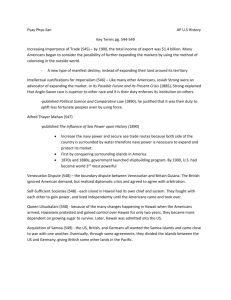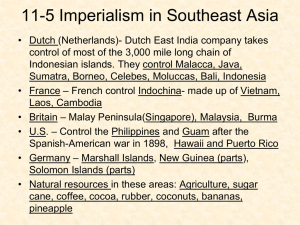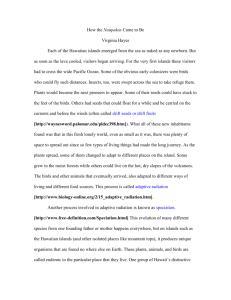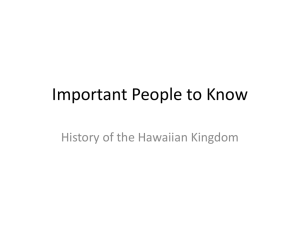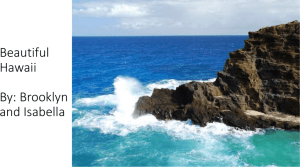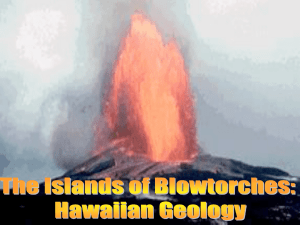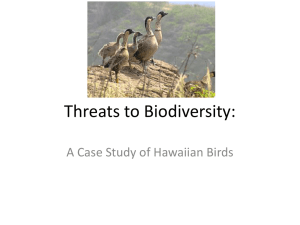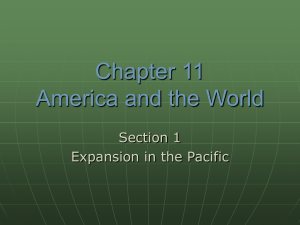Test 1 - Study Guide
advertisement
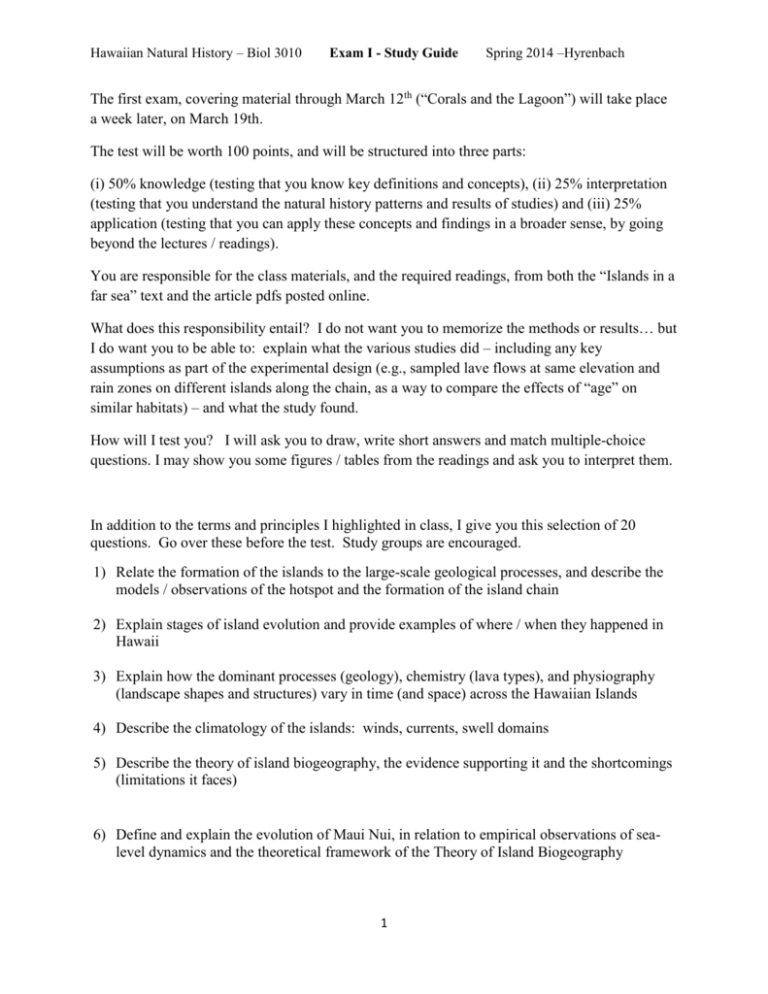
Hawaiian Natural History – Biol 3010 Exam I - Study Guide Spring 2014 –Hyrenbach The first exam, covering material through March 12th (“Corals and the Lagoon”) will take place a week later, on March 19th. The test will be worth 100 points, and will be structured into three parts: (i) 50% knowledge (testing that you know key definitions and concepts), (ii) 25% interpretation (testing that you understand the natural history patterns and results of studies) and (iii) 25% application (testing that you can apply these concepts and findings in a broader sense, by going beyond the lectures / readings). You are responsible for the class materials, and the required readings, from both the “Islands in a far sea” text and the article pdfs posted online. What does this responsibility entail? I do not want you to memorize the methods or results… but I do want you to be able to: explain what the various studies did – including any key assumptions as part of the experimental design (e.g., sampled lave flows at same elevation and rain zones on different islands along the chain, as a way to compare the effects of “age” on similar habitats) – and what the study found. How will I test you? I will ask you to draw, write short answers and match multiple-choice questions. I may show you some figures / tables from the readings and ask you to interpret them. In addition to the terms and principles I highlighted in class, I give you this selection of 20 questions. Go over these before the test. Study groups are encouraged. 1) Relate the formation of the islands to the large-scale geological processes, and describe the models / observations of the hotspot and the formation of the island chain 2) Explain stages of island evolution and provide examples of where / when they happened in Hawaii 3) Explain how the dominant processes (geology), chemistry (lava types), and physiography (landscape shapes and structures) vary in time (and space) across the Hawaiian Islands 4) Describe the climatology of the islands: winds, currents, swell domains 5) Describe the theory of island biogeography, the evidence supporting it and the shortcomings (limitations it faces) 6) Define and explain the evolution of Maui Nui, in relation to empirical observations of sealevel dynamics and the theoretical framework of the Theory of Island Biogeography 1 Hawaiian Natural History – Biol 3010 Exam I - Study Guide Spring 2014 –Hyrenbach 7) Describe the relationship between area and species – mathematically and verbally 8) Explain what processes influence the process of island colonization. Describe to what extent these are deterministic (set by inherent properties of islands / species) or random (determined by chance) 9) Describe the evidence for species colonizations of Hawaii. Hint - there are three main lines of evidence of dispersal and colonization: field studies, genetic studies, lab studies 10) Explain apparent mismatch between low colonization rates into Hawaii and high levels of endemism 11) Describe the main modes of flowering plant dispersal into Hawaii, with specific examples 12) Define and illustrate the three types of speciation in Hawaii 13) Be ready to discuss the speciation of three species groups: silverswords, drosophila, scaveola 14) Explain how species adaptation and speciation on islands are related to each other 15) Define and illustrate the concept of species flocks in Hawaii 16) Define and illustrate the process of co-evolution, using three different types of evidence: genetics, museum measurements, current field measurements 17) Describe evidence of level change in Hawaii, via three: (i) paleo-ecological data (past species abundance / community structure), (ii) climate reconstruction using paleooceanographic data (isotopic values in samples from the geological record), and (iii) physiography (geological formations above and under water). Be as specific as you can 18) Explain which factors influence the process of weathering and the nutrient cycling in Hawaiian forests, with specific examples 19) Discuss the ecological role of light, structuring marine communities of sessile (benthic) and motile (pelagic) organisms, and provide specific examples 20) Discuss the diversity and adaptations of Hawaiian cetaceans – resident and migratory 2


